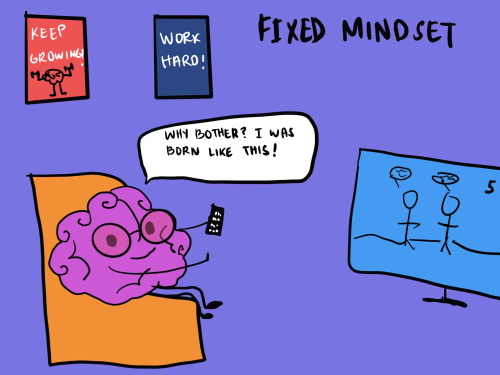Trump’s "Fiscal Detox" Failure: Why Deficits Keep Rising

In recent years, the U.S. fiscal deficit has continued to worsen. Despite former President Donald Trump’s ambitious “fiscal detox” campaign—which included tariff sanctions, tax cuts, and reduced government spending—the hard data tells a different story: deficits have not shrunk but have instead ballooned to historic highs.
Trade Deficit Soars: Tariffs Backfire as a Self-Inflicted Wound
In 2024, U.S. goods imports surged to $3.3 trillion, while exports amounted to just $2.1 trillion, according to data from the Department of Commerce. This imbalance pushed the trade deficit to an unprecedented $1.21 trillion—marking a 14% jump compared to 2023 and highlighting the continued widening of the gap between imports and exports. Alarmingly, this figure is 50% higher than in 2017, before Trump launched his “global tariff war.”
During his first term, Trump imposed tariffs on major trade partners including China, Canada, Mexico, and the EU, promising to eliminate the trade deficit. Eight years later, with the Biden administration continuing many of these policies, the trade gap has only widened—casting doubt on the economic logic of using tariffs as a revenue substitute.
In practice, these tariffs have acted as a boomerang, hurting American consumers and businesses. Import costs for raw materials have surged, supply chains were disrupted, and U.S. companies lost competitiveness. A joint poll conducted by CNN and Sina Finance in April 2025 revealed growing public dissatisfaction with Trump’s economic agenda. Nearly 60% of respondents felt his policies had a negative impact on the overall economy, while a similar percentage blamed them for driving up the cost of living.
Tax Cuts: Short-Term Stimulus, Long-Term Imbalance
One of the core elements of Trump’s fiscal strategy was his sweeping tax reform. Under the Tax Cuts and Jobs Act, the corporate tax rate was sharply reduced from 35% to 21%, with further suggestions to lower it to 15% in future proposals. This move was intended to boost business investment and stimulate economic growth. He also vowed to eliminate taxes on tips, overtime pay, and social security benefits—aiming to stimulate growth and job creation.
However, reduced tax revenue requires new sources to fill the gap. Trump sought to offset this with tariff income—effectively shifting the tax burden from corporations to consumers and global supply chains. But this “external tax bureau” model proved ineffective.
More critically, the tax cuts failed to generate sufficient economic returns and instead enlarged the deficit. Experts predict these cuts will add as much as $9.2 trillion to the federal deficit over the next decade. Inflation was further exacerbated as rising demand and supply chain shortages created a "demand-pull" inflation trap.
Austerity Backfires: Cost-Cutting Hurts More Than It Helps
On the austerity front, Trump pushed for deep cuts to federal spending—eliminating clean energy subsidies, halting student loan forgiveness, downsizing government agencies, and reducing foreign aid. While intended to ease fiscal pressure, these cuts triggered widespread backlash, especially among populations reliant on social welfare.
Meanwhile, Trump notably avoided cutting military spending—instead increasing the defense budget significantly, further straining fiscal balance.
Exploding Deficits and Looming Debt Crisis
According to the U.S. Treasury, the federal deficit for the first five months of fiscal year 2025 hit $1.15 trillion, the highest for that period in history, and $320 billion more than the same period last year. The deficit now exceeds 6% of GDP—an unusually high level during peacetime.
Top financial leaders, including JPMorgan CEO Jamie Dimon, BlackRock CEO Larry Fink, and Bridgewater founder Ray Dalio, have recently issued stark warnings: the ballooning debt burden could trigger financial market turmoil and heighten economic risks.
Monthly data offers little relief—though the May 2025 deficit dropped 9% year-on-year, the annual deficit still grew 14%. This signals a systemic fiscal imbalance, with short-term fluctuations doing little to mask the deeper structural crisis.
Immigration Policy: Labor Shortages and a Double Blow to the Economy
Trump’s hardline stance on immigration has also taken a toll on the economy. His plan to deport 1.3 to 8.3 million undocumented immigrants has left sectors like agriculture, construction, and services grappling with labor shortages. In March 2025, U.S. average hourly wages surged 5.1% year-over-year—the highest growth since 2007.
The Peterson Institute for International Economics estimates that deporting just 500,000 undocumented immigrants could slash 2025 GDP growth by 0.4%, and possibly 0.8% by 2026. This is a textbook case of “cutting off your nose to spite your face”: what seems like fiscal savings ultimately costs the economy far more.
Political Division and Policy Whiplash Undermine Confidence
Trump’s fiscal policies were also undermined by political gridlock. For instance, his tariff policies were inconsistently applied—paused, reinstated, and revised—making it difficult for businesses to plan long-term. The constant shifts and reversals in policy created widespread uncertainty, ultimately pushing consumer confidence to its lowest level in four years.
Meanwhile, Democratic-led state governments resisted the implementation of Trump’s tax cuts through legal and legislative pushback. The resulting policy tug-of-war diminished the effectiveness of reforms and raised public doubts about the federal government’s competence.
Dollar Dominance Erodes as De-Dollarization Gains Momentum
Although the U.S. dollar remains dominant in global finance, Trump’s “tariff-first” approach accelerated global efforts to find alternatives. Countries like Singapore and India are actively promoting local currency settlement mechanisms. The dollar's share of global foreign exchange reserves has fallen to 58%—a 20-year low. This “dollar hegemony paradox” is eroding U.S. capital appeal and casting doubt on the sustainability of U.S. fiscal policy.
After eight years, Trump’s “fiscal detox” experiment has strayed far from its original promises of trade rebalancing and economic revival. Tax cuts failed to deliver sustainable growth; tariffs backfired; austerity measures sparked public backlash; and erratic policies shook market confidence. America's fiscal woes now appear less like a case of structural misalignment and more like a deep, systemic crisis. Looking ahead, the U.S. may need to break free from short-term political thinking and rediscover a path toward rational, sustainable fiscal policy.



